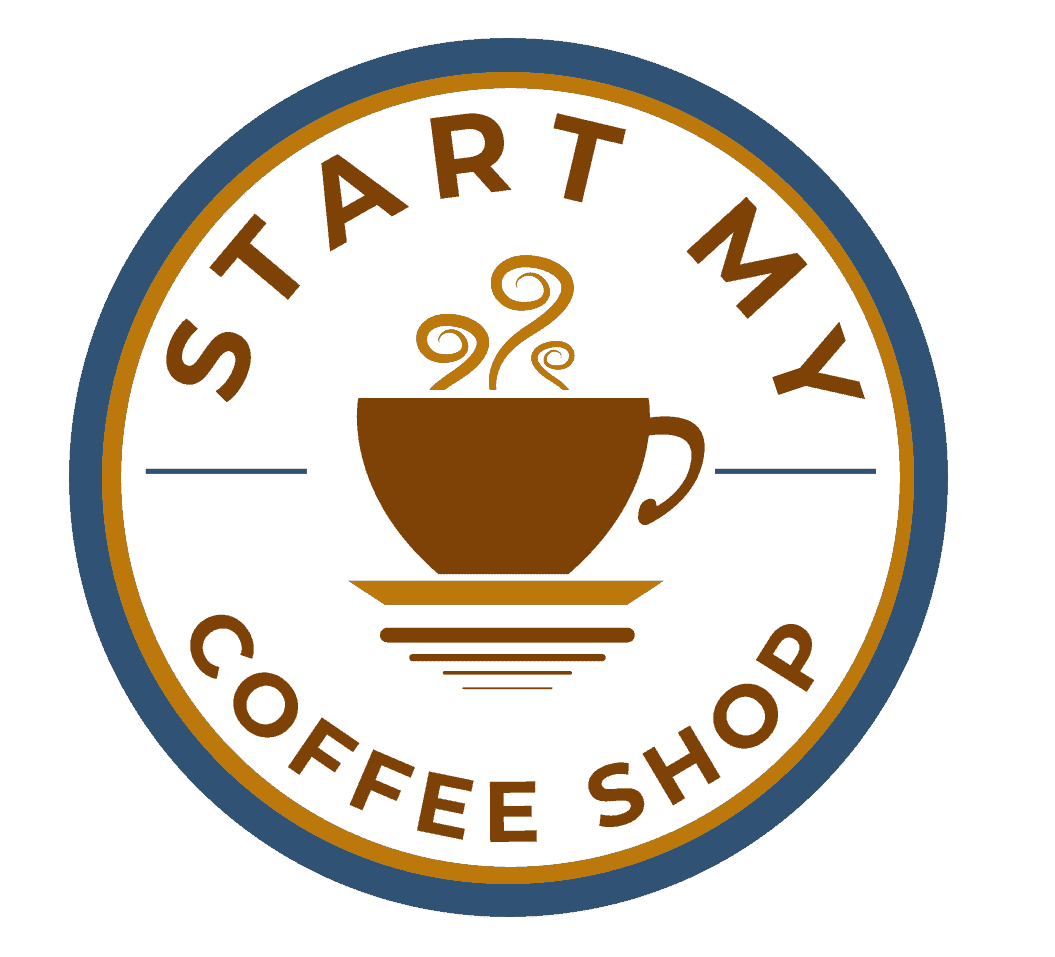Running a coffee shop has its benefits and downfalls. When it comes a time that you want to move on from the industry and sell your business, you must determine how much your coffee shop is worth.
To determine how much your or another coffee shop is worth:
-
Understand your coffee shop’s capital value.
-
Discover your coffee shop’s earning potential.
-
Determine income valuation and the “multiple”.
-
Calculate yearly net profit.
-
Calculate the final equation of income valuation.
1. Understand Your Coffee Shop’s Capital Value
According to ValuAdder, there are two ways to help you understand your coffee shop’s capital value which includes:
- Revenue plus the cash value of inventory.
- The sale price is determined via discretionary cash flow plus the cash value of inventory.
Below we will discuss how to determine your revenue and how to find out the cash value of your inventory. Once you have calculated both values, you can add them together to get the revenue plus inventory value of your company.
Determining Your Revenue
Finding out your revenue is as easy as calculating your net income. Go through your accounting records to see how many sales you made and the value of each sale over the year in question. Ask yourself these questions to determine your revenue.
-
- How much did my coffee shop spend on utilities?
- What was the cost of supplies?
- What was paid to cover business insurance policies?
- Was there any theft that had cost the coffee shop any lost money?
- How much was spent on labor to hire Managers, Shift Leads, and Baristas?
Finding out the Cash Value of Your Inventory
Discovering the cash value of your inventory is as easy as determining your cost of goods sold, otherwise known as COGS.
You can find out more examples and breakdowns of COGS using the Periodic Method by clicking on this link. Calculate the Cost of Goods Sold and Ending Inventory Using the Periodic Method – Principles of Accounting, Volume 1: Financial Accounting (opentextbc.ca)
For example, it may cost you $3.45 to make a cup of latte, let’s just say. You sold 400 cups of latte last month and now you have the ingredients enough to make another 250 cups when you begin to figure out the cash value of your inventory.
Hence, the cash value of your prepared cups of latte would be $862.50.
Complete this step for all of the menu items that you offer at your coffee shop to determine the total cash value of your inventory.
Find out how much you should pay your baristas HERE.
Equipment Value and the Depreciation Equation
You can also tell a potential buyer of your coffee shop the value of the equipment you are using. Depending on how long you have been in business, your equipment may have already experienced what is called depreciation.
For example, if one of your coffee shop machines cost $1200 when you purchased it 2 years ago, but it only lasts 8 years, that means that the value of that piece of equipment has depreciated, or lost monetary value over the last 2 years. This is only because it has been in use for your business during this time.
Using this example, $1200 original cost divided by 8 years that it’s anticipated to last would mean that this piece of equipment depreciates by $150 per year. Hence, if you were to add this to your equipment value list to sell your business after running it for 2 years, this means that this coffee shop equipment is now only valued at $900.
Seller’s Discretionary Cash Flow
If you would prefer to do the second method which is determining the discretionary cash flow plus the inventory revenue, there are more factors involved in calculation said cash flow for that portion of the equation.
Start by finding out how much your coffee shop made before taxes are taken out.
-
- Add non-operating expenses to this total.
- Subtract non-operating earnings from that number.
- Add unforeseen or one-time charges your business experienced
- Subtract income that did not regularly occur for your business.
- Add on any amortized or depreciation expenses accrued during the year.
- Add interest expenses your business accrued.
- Subtract interest income your coffee shop was given.
- Add your total compensation as the owner of your coffee shop.
- Adjust your owner’s compensation of any other business owners of your coffee shop to reflect the correct market value.
2. Discover Your Coffee Shop’s Earning Potential
How can you discover your coffee shop’s earning potential? It’s as simple as analyzing your last couple of years of profit or your sales projections if you are just starting in the business.
For example, if your profit in 2019 was 50,000 and your profit in 2020 was $52,000, that means that your net profit increased by 4%. That’s a sizable net profit increase in just one year, which shows that you have a decently profitable business.
Earning potential can also be calculated by:
- How high-quality your coffee tastes.
- The high traffic is driven to your business based on its location.
- The competitive advantage you have over other local coffee shops.
- Serving a niche market such as offering macarons or cake pops or another confection that another local coffee shop may not have in stock
- The different varieties of coffees and teas that you have in stock could be different and unique than what’s available at other local coffee shops.
Coffee shop buyers are going to consider all of these factors as a whole when deciding whether or not to purchase your coffee shop. Reassure that you and your team are serving only the best-brewed coffee and highest quality coffee shop meals and treat to your customers so that you can gain more earning potential in the eyes of buyers.
3. Determine Income Valuation and the “Multiple”
According to Black Market Roasters, there is a magic “multiple” that will help you to determine your coffee shop’s worth.
This multiple is determined by how long that the buyer wishes to make his or her money back before making a profit. For example, if the buyer purchases your coffee shop for 300,000 and wants to see that money made back in 2 years, then that magic “multiple” will be 2.
4. Calculate Yearly Net Profit
Before we put it all together into an equation, you must also calculate your net profit. You may already have this figure from determining your revenue earlier on in the blog post.
Your coffee shop’s net profit is essentially the money you have leftover after paying utility expenses, insurance expenses, labor costs, supply costs, or any one-time charges. This net profit is yours to keep to reinvest in your business or pay yourself as the business owner to reward you for your efforts of a job well done.
5. Calculate the Final Equation of Value
The income valuation of your coffee shop is equal to your annual net profit multiplied by the “magic” multiple, or the number of years in which the buyer wants to see their money made back.
If your annual net profit is different every year, go ahead and take the average of those numbers, so that you can get an average income valuation that is not too high and not too low.
For example, if you had a net profit of $90,000 in 2017, $92,000 in 2018, $97,000 in 2019, and $91,000 in 2020, add all 4 of these totals together and then divide the number by 4. In this example, your average net profit over the last 4 years would be $92,500.
If your buyer wants to see income made back in 2 years, you would multiply $92,500 by 2 to get an income valuation of $185,000.
Conclusion
If you need help in finding out the income valuation of your coffee shop, enlist the help of your co-owner or just conduct some more research about it online. As long as you explain your methods of calculation and it is a sound and thorough presentation, buyers will be more apt to believe your assertions and there’s a higher likelihood of a buyer purchasing your coffee shop business.
Frequently Asked Questions
This is up to you in which method that you use. While the discretionary cash flow method involves more addition and addition, the revenue method would be easier because you may have already calculated that over time in the past year or two.
Before selling your coffee shop, consider moving the location to a higher traffic area, so that the income valuation is higher. If you try to sell your business while it is still in the low traffic area, you could risk a lower-income valuation that will deter buyers from wanting to purchase your coffee shop.
To learn more on how to start your own coffee shop checkout my startup documents here
Please note: This blog post is for educational purposes only and does not constitute legal advice. Please consult a legal expert to address your specific needs.

Hi! I’m Shawn Chun
My adventure in coffee began when I first launched my first coffee shop back in the early 2000s. I had to figure out so many things on my own and to make it worse within 2 years of opening two large corporate coffee chains moved in just blocks away from me!
As I saw smaller and even some larger coffee shops in the neighborhood slowly lose customers to these giant coffee chains and slowly close up shop, I knew that I had to start getting creative…or go out of business.
I (like you may be) knew the coffee industry well. I could make the best latte art around and the foam on my caps was the fluffiest you have ever seen. I even had the best state-of-the-art 2 group digital Nuova Simonelli machine money could buy. But I knew that these things alone would not be enough to lure customers away from the name brand established coffee shops.
Eventually, through lots of trial and error as well as perseverance and creativity I did find a way to not only survive but also thrive in the coffee/espresso industry even while those corporate coffee chains stayed put. During those years I learned to adapt and always faced new challenges. It was not always easy, however, in the end, I was the sole survivor independent coffee shop within a 10-mile radius of my location. Just two corporate coffee chains and I were left after that year. All told the corporate coffee chains took down over 15 small independent coffee shops and kiosks and I was the last one standing and thriving.
Along the years I meet others with the same passion for coffee and I quickly learned that it is not only “how good a barista is” that makes a coffee shop successful, but the business side of coffee as well.
Hence why I started this website you are on now. To provide the tools and resources for up and coming coffee shop owners to gain that vital insight and knowledge on how to start a coffee shop successfully.
Stick around, browse through my helpful blog and resources and enjoy your stay! With lots of LATTE LOVE!
Shawn






